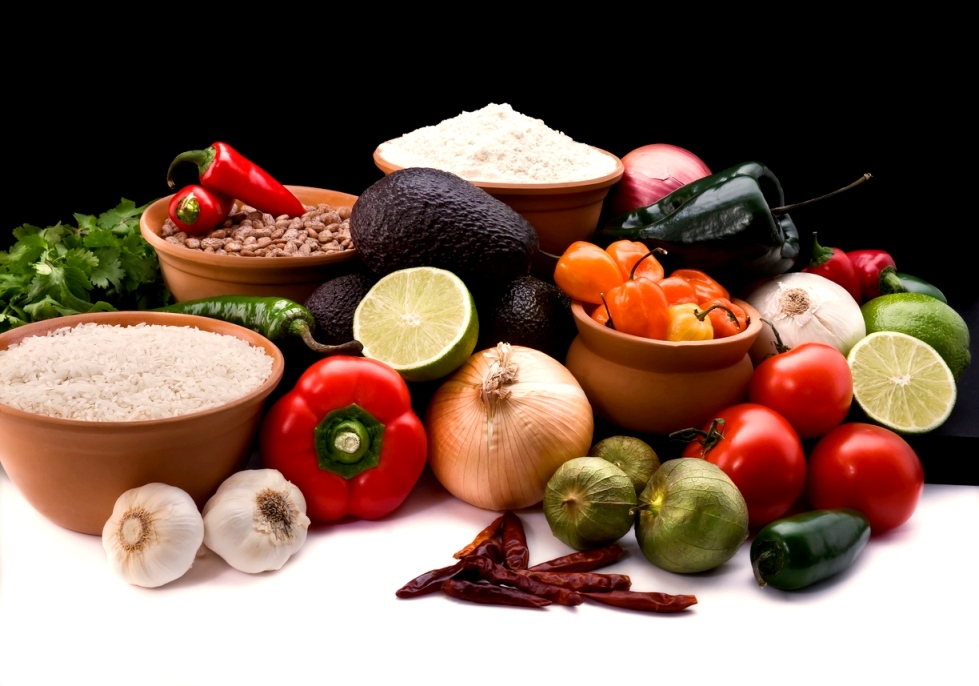The history of Mexican food goes right back to 8000 B.C. when indigenous people grew the first domesticated corn that would become the staple food of most Mesoamerican cultures. The vast majority of pre-Hispanic people who lived in Mexico left us flavours that have endured the test of time right up to the present day.
Ingredients such as beans, huautzontle, huitlacoche, nopal, potato, sweet potato, achiote, epazote, coyol, chile, mole, flowers, insects, seeds like amaranth and corn, and cooking utensils like the metate (grinding stone), molcajete (mortar), comal (griddle), comitalli (pot for preparing cornmeal dough), molinillo (grinder) , have been part of traditional Mexican cuisine since the dawn of time, which was inscribed in 2010 on the UNESCO list of Intangible Cultural Heritage of Humanity.
These ingredients are mixed to create exotic flavours, making them global ambassadors of dishes that flood your taste buds with a unique pleasure and today are part of the gourmet experiences of Mexican pre-Hispanic cuisine.
There are 549 species of edible insects in Mexico used to prepare dishes like guacamole with escamoles served with black corn tortilla chips, melted cheese with grasshoppers, escamoles sopecitos, frosted mango sorbet with maguey worm salt or a sensational mezcal of bitter chocolate with scorpion. Insects are jammed packed with proteins and contain hardly any fat making them the perfect natural delicacy.
You can also find scrumptious dishes made from any of the 150 types of beans in Mexico. Meats like quail in an orange sauce, pork served with mashed sweet potato, pheasant with prickly pear, panela cheese and roast tomatoes, fish tamales, and prawn carnitas put the spotlight on this novel and delicious proposal of fusion cuisine.
Some of the ingredients typically used in soups associated with this delicious cuisine include squash blossom, huitlacoche, rose petals, bougainvillaea, pumpkin seeds, walnuts, corn and chillies.
Chilies are also used to add flavour and colour to all dishes, whether roasted, fresh, raw, or Undoubtedly, they’re one of the essential ingredients in many dishes with more then 64 varieties and close to 200 types of criolla. Popular dishes include Chiles en Nogada, prepared with poblano chili and stuffed with biznaga (a traditional Mexican sweet), minced meat, tomato, and olives, and covered in a delicious sauce made from walnuts or nogada and pomegranate seeds.
And the ingredient we previously mentioned, the king of kings that you cannot do without is the “huitlacoche” or “cuitlacoche”, often referred to as corn smut in English, is widely used by some of the country’s most renowned chefs and considered a gourmet product of national pride for Mexicans. In ancient times this delicacy was believed to a food of the gods.
Some of Mexico’s leading chefs in this culinary art form who are making huge efforts to revive, disseminate and thoroughly investigate the roots of Mexican cuisine include Ricardo Muñoz Zurita, Patricia Quintana, Enrique Olvera, Edgar Núñez, Enrique González Beristaín, Jorge Vallejo, Benito Molina & Solange Muris, Daniel Ovadía, Eduardo García e Isaac and Fabián Padilla. Many of these chefs’ dishes come accompanied with words such as innovation, molecular, science, deconstruction, contrast, traditional, techno-emotional and experience, to name but a few.
The flavours of modern cuisine based on traditional Mexican ingredients take us back in time to memories of homemade aromas weaving together old tastes with modern aesthetics where the flare and wonders of the past merge with the present.






